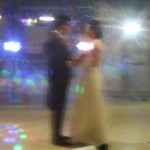Photo story: A walk down Golden Lane in Prague Castle

Zlatá ulička, also known as the Golden Lane, is to me, the best attraction in Prague Castle. St Vitus Cathedral was grand and majestic, but it was the Golden Lane which made the visit memorable. Back in the day, these colourful houses were inhabited by servants of Prague Castle. These servants worked as herbalists, metalworkers and cooks.

How Golden Lane came to be…
At the beginning of the 20th century, residents of Golden Lane were well aware that their houses had a special unique charm. As society gradually began to shower affection for the old flavours of Prague, Golden Lane became famous.

To increase the attractiveness of their homes, owners began to add nobility-themed fixtures to their homes. Wooden floors, tiled stoves and windows dressed with net curtains were some of the new additions. Walls were painted in bright, beguiling colours, while owners used stencils to decorative touches.

Owners started to vie with each other for the title of best house, and many opened their homes to visitors who wouldn’t mind paying a few coins to look in. The most enterprising of all owners rented their homes to artists or writers who were on the look out for inspiration for their work.

In 1953, the Office of the President of the Republic bought all the houses from the owners.
Info source: Sign at House No.24. The House of Mrs Magdalena (1st Republic)
My favourite house: No. 27 The Herbalist’s house (Late Baroque)
I fell in love with the herbs which were hanging on the simple off-white walls. The house reminded me of a European-styled Chinese medicine shop.

An essential skill that was required by some servants of the Castle was the ability to treat wounds, cure diseases and provide assistance to the suffering. Such folk healers and herbalists often had enough experience to carry a certificate stating that someone was successfully cured by them. Their help was sought after not only by inhabitants of the Castle, but nobility living outside the Castle. In addition to the more ‘rational’ approaches to treatment, herbalists often used methods of magic and incantation. The most common method of healing (thankfully, in this blogger’s view) was the use of herbs and botanical extracts.

The appearance of a herbalist’s home resembled an apothecary, in many respects. Kept in bottles, jugs and boxes were ‘saft’, nectars from plants, purgative and tonic opiates. Powders in boxes were used for curing teeth, for soothing throats and the cure for roundworms. Plasters, seeds and ‘sugar coated flowers’ were also kept in boxes. The trunk and cupboard contained arrangements of ‘snail shells, ‘human craniums’ pig’s teeth, bones from octopus and dried frogs.
Info source: No. 27 The Herbalist’s house (Late Baroque)

The Travelling Squid
The Golden Lane was a refreshing touch in contrast to the numerous cathedrals, palaces and castles I had visited in Europe. I felt very relaxed, as I didn’t have to imbibe hard historical facts. As I strolled down the lane, I thought of the writers and artists who had rented these houses for inspiration decades ago and I thought to myself. Boy, the Golden Lane, (renovation aside), had certainly lived up to its name and was a quaint and charming place to be in.
So take a walk down Golden Lane, preferably in the earlier hours of the morning when there are fewer people around and about. You’ll be able to better appreciate the peace and serenity of the place.





